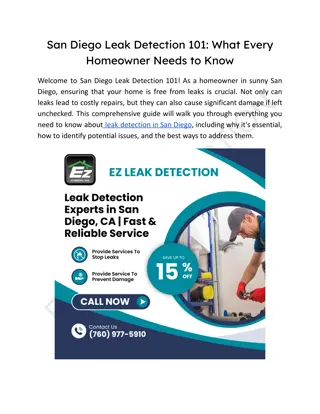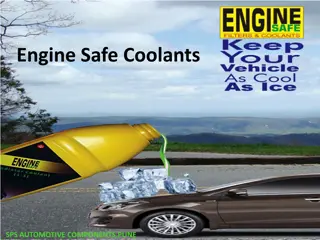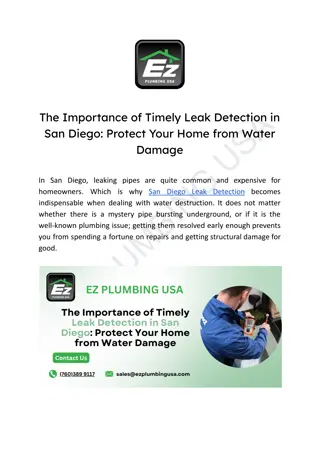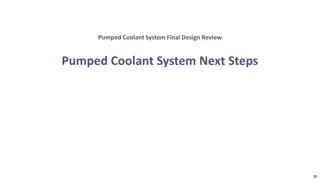Identifying the Most Common Coolant Leak in BMW Vehicles
Coolant leaks in BMW vehicles often stem from worn hoses, a failing water pump, or a cracked radiator. Symptoms include overheating, low coolant levels, or visible fluid under the car. Prompt detection and repair are crucial to avoid engine damage. R
Download Presentation

Please find below an Image/Link to download the presentation.
The content on the website is provided AS IS for your information and personal use only. It may not be sold, licensed, or shared on other websites without obtaining consent from the author.If you encounter any issues during the download, it is possible that the publisher has removed the file from their server.
You are allowed to download the files provided on this website for personal or commercial use, subject to the condition that they are used lawfully. All files are the property of their respective owners.
The content on the website is provided AS IS for your information and personal use only. It may not be sold, licensed, or shared on other websites without obtaining consent from the author.
E N D
Presentation Transcript
Identifying the Identifying the Most Common Most Common Coolant Leak in Coolant Leak in BMW Vehicles BMW Vehicles
Understanding the Role Understanding the Role of Coolant in BMW of Coolant in BMW Vehicles Vehicles
Coolant regulates your BMW s engine temperature, preventing overheating and freezing in extreme conditions.
A coolant leak compromises engine performance, leading to potential overheating and significant engine damage.
Most Common Sources of Most Common Sources of Coolant Leaks Coolant Leaks
Radiator Leaks: Damage or corrosion in the radiator causes coolant to escape.
Hose Failures: Aging or cracked hoses are frequent culprits behind coolant leaks.
Water Pump Malfunction: A failing pump may leak coolant or cause insufficient circulation.
Thermostat Housing Cracks: Wear and tear in the housing can result in visible leaks.
Expansion Tank Issues: Cracks in the plastic tank or a faulty cap can lead to leakage under pressure.
Signs of a Coolant Leak Signs of a Coolant Leak
Low Coolant Levels: A frequently empty reservoir signals a leak.
Visible Puddles: Green, orange, or pink fluid under your BMW is a clear indicator.
Overheating Engine: A rising temperature gauge or overheating light warns of insufficient coolant.
Sweet Odor: Coolant leaks often produce a distinct, sweet smell near the engine.
Steam from the Hood: Indicates a severe coolant loss leading to engine overheating.
Diagnosing and Locating Diagnosing and Locating the Leak the Leak
Pressure Testing: Technicians pressurize the cooling system to locate the source of the leak.
Visual Inspection: Examine the radiator, hoses, water pump, and expansion tank for visible signs of leakage.
Dye Testing: Adding UV dye to the coolant reveals leak points under UV light.
Temperature Monitoring: Unusual temperature fluctuations can point to cooling system failures.
Solutions to Common Solutions to Common Coolant Leaks Coolant Leaks
Radiator Repairs or Replacement: Addressing corrosion or damage to ensure proper cooling.
Hose Replacement: Install durable, high-quality hoses to prevent recurring leaks.
Water Pump Replacement: Upgrade to an OEM or high- performance pump for reliability.
Thermostat Housing Replacement: Fix cracks or upgrade to an aluminum housing for durability.
Expansion Tank Replacement: Replace the tank or cap to maintain system pressure.
Prevent Coolant Leaks Prevent Coolant Leaks with Regular with Regular Maintenance Maintenance
Inspect the cooling system during every service visit to identify early signs of wear or damage.
Use BMW-recommended coolant to ensure compatibility and optimal performance.
Rely on certified BMW specialists for diagnostics and repairs to maintain your vehicle s performance.























